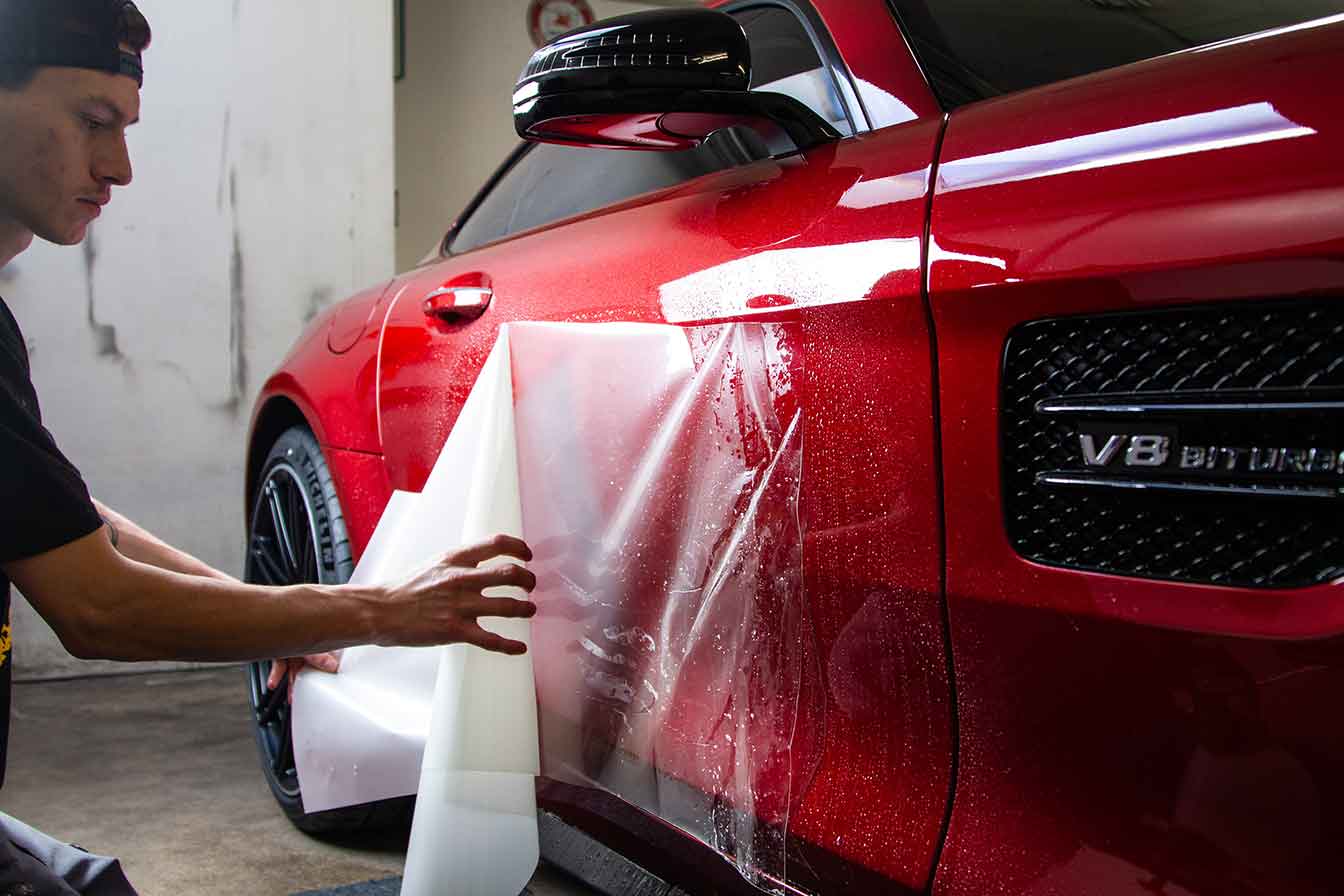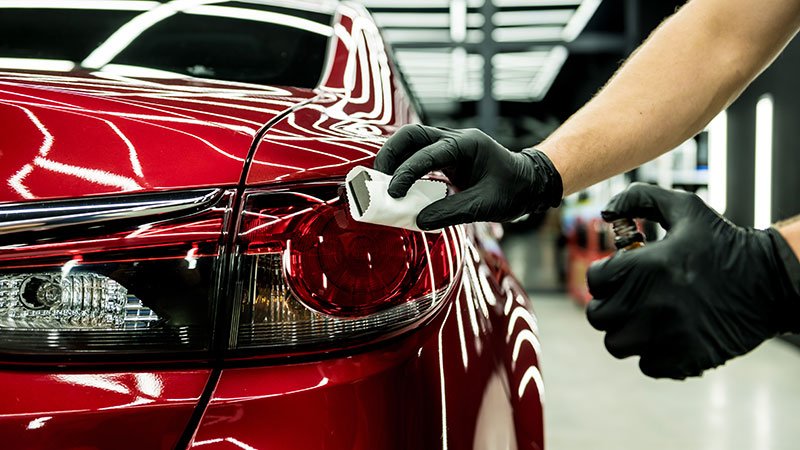Explore Exactly How Ceramic Finish Can Transform Your Vehicle's Surface and Efficiency
Ceramic finishing stands for a significant advancement in vehicle surface protection, offering a sturdy, hydrophobic barrier that boosts both look and durability. As we explore the details of ceramic covering, the effects for your car's performance and aesthetic allure become progressively engaging.
What Is Ceramic Finish?

The application procedure includes extensive surface area preparation, including cleaning, polishing, and sanitizing the paint to ensure ideal adhesion. Once the surface area is prepared, the ceramic coating is carefully applied, enabling correct curing and bonding. This procedure not just boosts the car's visual charm but additionally supplies an added layer of protection versus environmental contaminants such as dirt, UV rays, and chemicals.
Ceramic coverings are offered in various formulations, accommodating various demands and preferences. Their versatility makes them suitable for a wide variety of lorries, from daily vehicles to high-end deluxe versions. Therefore, ceramic layer has become significantly preferred amongst cars and truck fanatics and daily motorists alike, seeking to preserve their vehicle's look and stability gradually.
Trick Advantages of Ceramic Layer
The application of ceramic finishing offers numerous benefits that add to vehicle longevity and aesthetic charm. Among the main benefits is its outstanding protection against ecological impurities. Ceramic coverings produce a hydrophobic surface that wards off water, dust, and gunk, making it substantially much easier to clean up and keep the automobile's exterior. This attribute helps maintain the paintwork, minimizing the danger of scratches and swirl marks.

Another remarkable advantage is the boosted gloss and depth that ceramic layers impart to the vehicle's finish, developing a stunning aesthetic charm. Lastly, the toughness of ceramic layers is unrivaled when compared to conventional waxes and sealers, usually long-term numerous years with appropriate maintenance. Overall, the key advantages of ceramic coating make it a vital choice for car owners seeking ideal defense and aesthetic enhancement.
How Ceramic Covering Works
At its core, ceramic coating functions by producing a chemical bond in between the finishing and the car's paint surface. This bond is created with a process called sol-gel technology, where liquid polymers are used to the surface area and consequently remedy to produce a long lasting, protective layer. The outcome is a semi-permanent finishing that enhances the car's look while giving a strong defense versus environmental contaminants.
The ceramic covering is composed of silica dioxide (SiO2) and in some cases titanium dioxide (TiO2), which are vital components that supply extraordinary solidity and hydrophobic residential properties - Ceramic Coating. Once healed, the coating develops a dense, glass-like layer that drives away water and dirt, making it considerably easier to keep the automobile's sanitation. In addition, this barrier secures against UV rays, oxidation, and chemical spots, inevitably extending the life of the paint
Another vital element of just how ceramic covering works is its capacity to complete microscopic flaws in the automobile's paint surface. This smoothing result boosts the total gloss and radiate, using a visually appealing surface that lasts longer than Find Out More conventional waxes or sealants. The result is a vehicle that not just looks far better yet is additionally better shielded against the components.
Application Refine Described
Recognizing the application procedure visit this website of ceramic coating is essential for achieving optimal results. A proper surface is crucial, as any flaws can endanger the finishing's efficiency and longevity.
As soon as the surface is tidy and completely dry, a paint improvement might be executed to attend to any type of swirl marks or scratches. This action is crucial, as the ceramic covering will certainly secure the surface area's problem. After correction, the vehicle is cleaned down with an isopropyl alcohol option to remove any kind of remaining oils or deposits.
Next, the ceramic covering is applied in small areas, using either a foam applicator or a microfiber fabric. Ceramic Coating. The finish is spread out uniformly and enabled to bond with the surface area for a specified healing time, which can vary based upon the item made use of. Following application, the automobile is commonly left in a regulated atmosphere to treat completely. This precise process makes certain that the ceramic layer sticks properly, giving the desired protection and boosting the vehicle's look.
Maintenance Tips for Durability
Correct maintenance of your lorry's ceramic finishing is essential for optimizing its longevity and effectiveness. To start, routine cleaning is critical. Utilize a pH-neutral auto hair shampoo and microfiber mitts to protect against any kind of scratching or damages to the finish. Stay clear of automated car cleans with extreme brushes, as they can compromise the finish's integrity.

Furthermore, consider routine examinations for any signs of wear or damage. Addressing concerns without delay can stop much more comprehensive repair services down the line. Prevent exposing the lorry to extreme problems, such as prolonged sunlight or severe chemicals, which might break down the covering.
Last but not least, keep in mind that while ceramic layers use significant security, they are not completely impervious. Ceramic Coating. Normal maintenance and attention to detail will certainly ensure your automobile preserves its aesthetic and efficiency advantages for many years to find
Conclusion
In recap, ceramic coating stands for a considerable development in vehicle surface defense and performance improvement. Its ability to develop a long lasting, hydrophobic layer assists in the repulsion of water, dust, and grime while giving a glossy finish that elevates aesthetic allure. The durable nature of ceramic finishings not just safeguards against UV rays and ecological contaminants but also minimizes maintenance initiatives, inevitably extending the lifespan of a lorry's paintwork and ensuring it stays in ideal problem for several years.